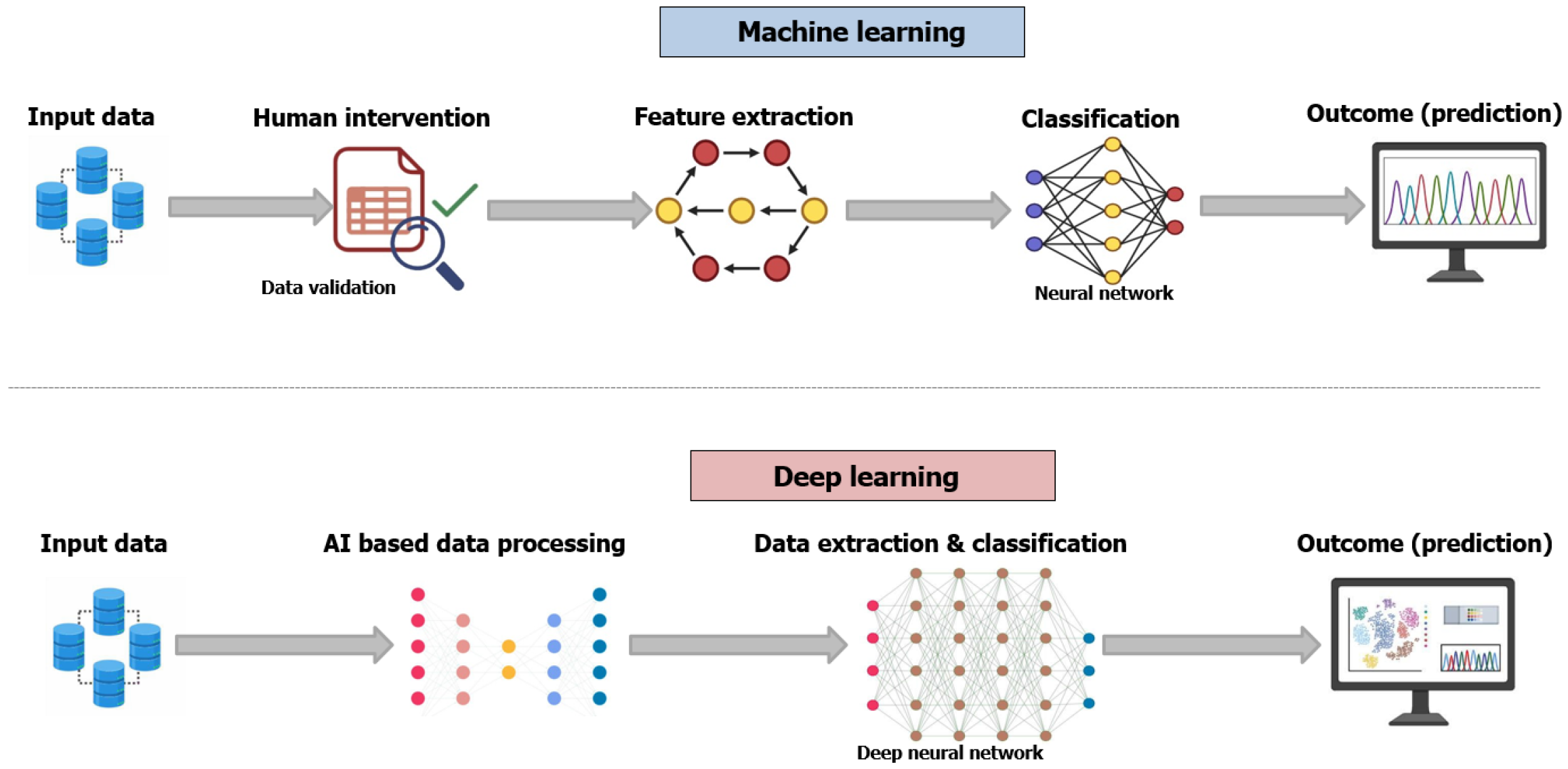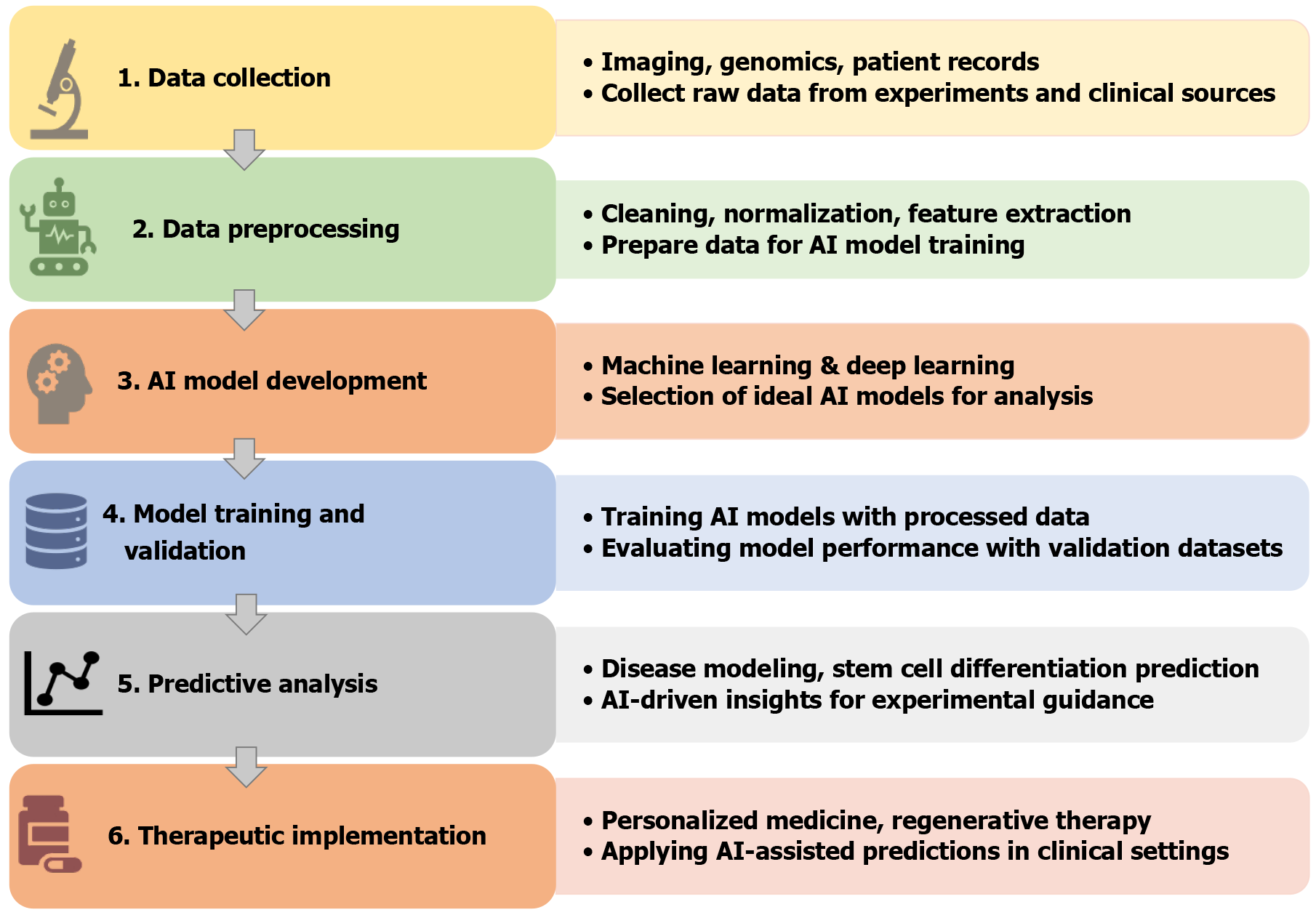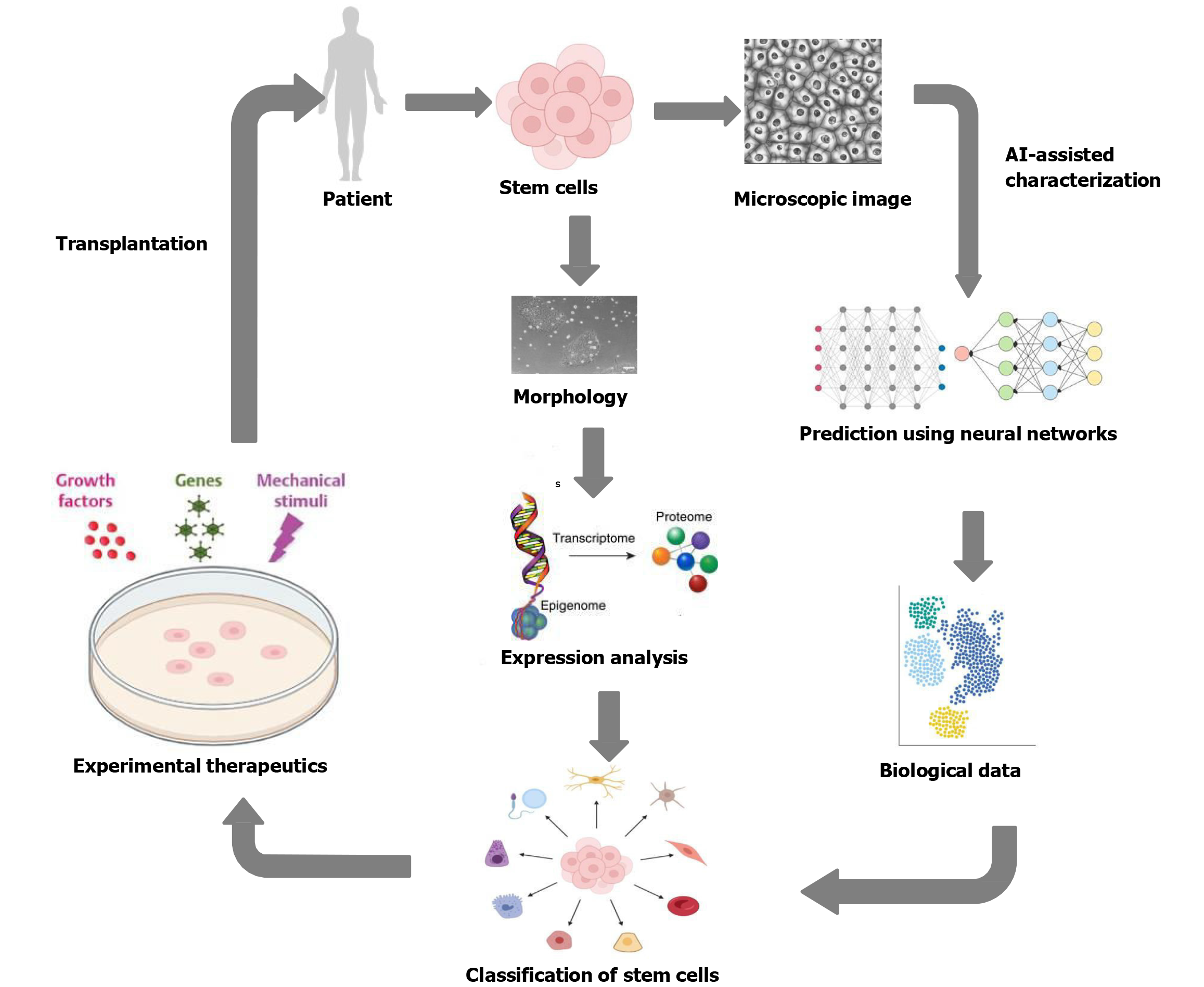Copyright
©The Author(s) 2025.
World J Stem Cells. Aug 26, 2025; 17(8): 106086
Published online Aug 26, 2025. doi: 10.4252/wjsc.v17.i8.106086
Published online Aug 26, 2025. doi: 10.4252/wjsc.v17.i8.106086
Figure 1 Machine learning vs deep learning.
This figure illustrates the differences between machine learning and deep learning. Data is collected and stored in databases. In machine learning, human intervention is required for data validation and feature extraction before classification using a neural network. In contrast, deep learning automates feature extraction using deep neural networks, eliminating the need for manual input. Deep learning is more data-intensive but enhances accuracy and efficiency in predictions. AI: Artificial intelligence.
Figure 2 Development of artificial intelligence-driven stem cells-based therapeutics.
Image, genetic, and patient record data from clinical and experimental sources are collected. The collected data undergo cleaning, normalization, and feature extraction to prepare it for artificial intelligence (AI) model training. Machine learning and deep learning algorithms for analysis are chosen and implemented during AI model construction. AI models are trained with processed data and validated using validation datasets. Predictive analysis uses AI to model diseases, predict stem cell differentiation, and direct experiments. Clinicians use AI-assisted predictions to promote personalized medicine and regenerative therapies. AI: Artificial intelligence.
Figure 3 Representative image of artificial intelligence-supported stem cell treatment.
Patient stem cells are isolated. An image of a stem cell is captured with the use of a microscope. Artificial neural networks, genetic algorithms, and Bayesian networks analyze stem cell characteristics. Deep learning, natural language processing, and machine learning predict stem cell morphology and behavior. Stem cell types are classified using convolutional neural networks, support vector machines, and random forests based on this biological data and expression. Stem cells are modified using growth hormones, genes, and mechanical stimulation for clinical use. Therapeutic stem cells are then administered to the patient. AI: Artificial intelligence.
- Citation: Choudhery MS, Arif T, Mahmood R. Applications of artificial intelligence in stem cell therapy. World J Stem Cells 2025; 17(8): 106086
- URL: https://www.wjgnet.com/1948-0210/full/v17/i8/106086.htm
- DOI: https://dx.doi.org/10.4252/wjsc.v17.i8.106086















